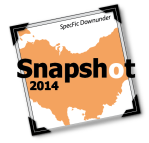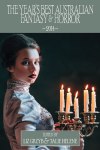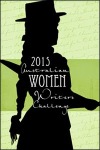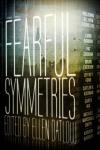 Being able to escape into the realm of the imagination was handy growing up as the youngest in a family of 11. CHRIS McMAHON continues his fantasy and SF writing habit from his home town of Brisbane, where he lives with his lovely wife Sandra and three young children, Aedan, Declan and Brigit. He has a third-dan black belt in Moon Lee Tae Kwon Do and also enjoys movies and exploring narrow alleyways. Chris is very passionate about music, if a little inconsistent, and loves singing and playing classical guitar.
Being able to escape into the realm of the imagination was handy growing up as the youngest in a family of 11. CHRIS McMAHON continues his fantasy and SF writing habit from his home town of Brisbane, where he lives with his lovely wife Sandra and three young children, Aedan, Declan and Brigit. He has a third-dan black belt in Moon Lee Tae Kwon Do and also enjoys movies and exploring narrow alleyways. Chris is very passionate about music, if a little inconsistent, and loves singing and playing classical guitar.
Chris has recently released his three-book Jakirian Cycle: heroic hantasy in a world of ceramic weapons, where all metal is magical! Think Kill Bill meets Dune!
Chris regularly blogs on writing and Space news at his website: www.chrismcmahon.net.
1.Your book Calvanni, one of the Jakirian Cycle, is fresh out on Amazon. Can you tell us a little about the series’ path so far, and any tips you might have picked up along the way you’d like to share?
Hey, It’s not just Calvanni – I have three books out in the Jakirian Cycle, all of which were launched in March 2014.
The first book in the Jakirian Cycle is The Calvanni, the second Scytheman, and the third Sorcerer. It’s a big series, with tons of fantasy action and unique worldbuilding. Getting them out has been a real landmark effort for me. All three of them look great, thanks to the efforts of designer extraordinaire Daryl Lindquist. They have been published in both print and electronic editions, something which is also new for me.
The first edition of The Calvanni was published in 2006. To get the rest of the series out proved to be a long, gruelling effort. But the end result was definitely worth it. People love this series, even those who have never read fantasy before.
If I had to share one thing, that would be to focus on the quality of the work.
As a writer trying to get your work into publication, so much is dependent on luck and timing. You could have a brilliant manuscript, but until you find the right editor at the right time, conventional mainstream publication, and its blissful access to distribution and economies of scale, will always be elusive. If you focus on making the manuscript absolutely shine, then no matter what your route to publication – small press or independent – you can take pride in what you have produced. That means taking the time to make it the best novel you can, then investing in quality editorial – and thorough proofreading!

2. How has your science background informed your writing – your Jakirian Cycle has an interesting mix of ceramics and metal, for instance?
Yes, I would say it has. For a start I guess I bring that specialist mindset to the whole writing game (I am a chemical engineer). When it comes to technology and the mechanics of worldbuilding, I can bring an (obsessive) thoroughness that pays dividends in the depth and texture of the worlds I create, and in the scientific credibility of the concepts integral to my science fiction.
What I create definitely has an edge of unique inventiveness. The only downside is the sheer density of ideas. That can bog a story down, particularly at the beginning. It’s tricky balance to keep the reader hooked as they enter a complex world, and yet introduce them to all these new elements.

3. What is it about SF and fantasy that has led you to write it, and is that where your next work will be, too?
Well, that’s a tough one. I’d like to see any writer really define the true reason they write.
On a surface level, I guess it was the ideas that drove me. Unique SF ideas, or events and characters in a otherworldly fantasy setting. The heroic journey. That’s what gripped my mind and lifted up the back of my head with the intensity of the ideas’ birth.
As to why I really write? What is it that keeps me at it? That’s something deeper, more intuitive and heartfelt, that (for me) defies explanation.
4. What Australian works have you loved recently?
Can’t think of any off hand.
I recently devoured the (American author) Kevin Hearne Iron Druid books. I think I enjoyed those more than anything since David Gemmell died – and for me that’s saying a lot!

5. Have recent changes in the publishing industry influenced the way you work? What do you think you will be publishing/writing/reading in five years from now?
I’ve never managed to break into the publishing mainstream, so I can say that for me, this has not changed how I approach my projects.
I guess in terms of sales and marketing, I have definitely focussed more on the internet since the first Calvanni publication in 2006. I had quite a few sales through bookstores with the first Calvanni edition, but now the higher percentage of my sales in the Jakirian series (The Calvanni, Scytheman and Sorcerer) are e-books.
Since I’ve been bashing away at this for over 20 years now, I don’t think I’ll have changed that much in five years.

* * *
THIS interview was conducted as part of the 2014 Snapshot of Australian speculative fiction. We’re blogging interviews from 28 July to 10 August and archiving them at SF Signal. You can read interviews at:
 Ticonderoga Publications has announced the line-up of its latest Year’s Best Australian Fantasy and Horror — 28 stories from 2014, curated again by Talie Helene and Liz Grzyb, to wrap your eyes around and fire your imagination. Or something like that.
Ticonderoga Publications has announced the line-up of its latest Year’s Best Australian Fantasy and Horror — 28 stories from 2014, curated again by Talie Helene and Liz Grzyb, to wrap your eyes around and fire your imagination. Or something like that. 















